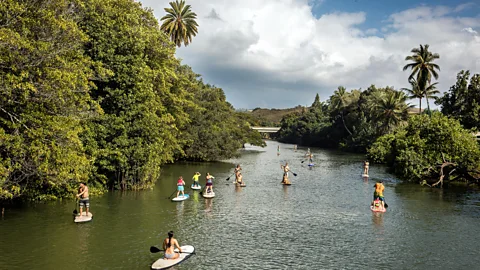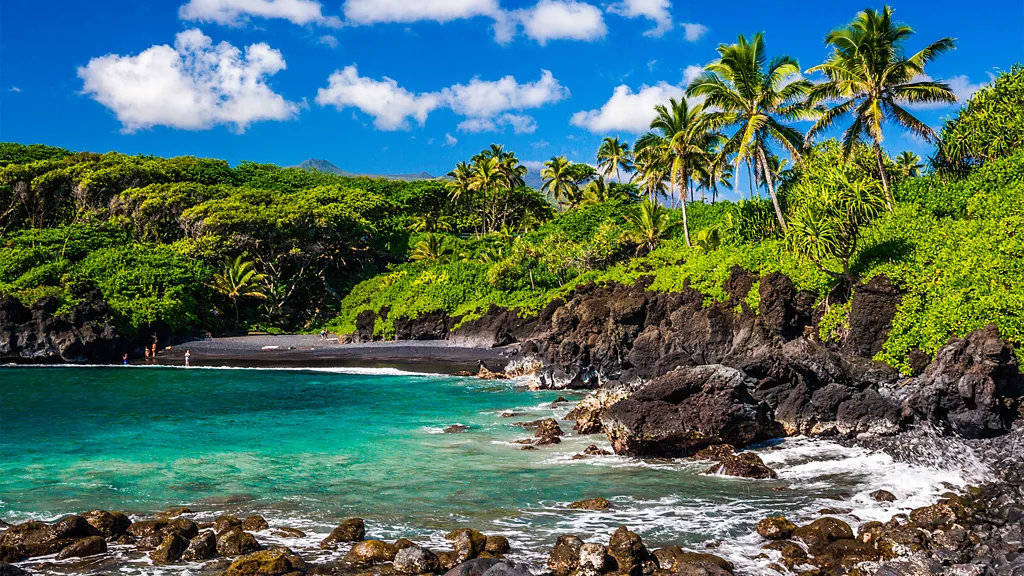A series of new climate-focused tourism fees could be the key to preserving some of the world’s most beloved – and vulnerable – destinations.
Your next holiday may be slightly more expensive than you expect – and it’s not just because of inflation. Around the world, a growing number of destinations are introducing new climate-focused fees on hotel stays, ferry tickets and admission to national parks and other protected areas.
But even though paying more for a trip may feel frustrating, these new fees could help ensure some of your favourite destinations survive in a world of rising seas, record heat and natural disasters.
In August 2023, wildfires swept through Hawaii’s most historic town, Lahaina, in the heart of Maui. Sparked by drought and fanned by hurricane winds, the blaze killed 102 people and destroyed more than 2,000 buildings, making it one of the deadliest climate-related wildfires in US history.

This May, Hawaii took an unprecedented step by enacting the US’s first tourist tax explicitly tied to the climate crisis. Known as the Green Fee, the bill adds an additional 0.75% on top of existing accommodation taxes. The fee is expected to raise $100m annually for wildfire recovery, reef restoration and climate adaptation starting in 2026.
In a press statement, Hawaii’s Governor Josh Green said the new law addresses the growing impact that hosting 10 million tourists has on the islands and reflects a broader strategy to respond to the increasing frequency of natural disasters.
“This isn’t just a surcharge,” Susan Fazekas, a Maui-based hiking guide and owner of Awapuhi Adventures told the BBC. “Visitors come here for the natural beauty – the waterfalls, reefs and rainforest trails – but those very resources are under strain. Asking them to contribute to the care of these places is not a burden; it’s a chance to be part of their preservation. It’s also a way to honour the kuleana (shared responsibility) we all share in protecting Hawaii’s future.”
As climate-related disasters intensify, other destinations around the world are also rethinking how tourism revenue is collected and where it goes.

In January 2024, Greece replaced its overnight stay tax with a Climate Crisis Resilience Fee. Travellers now pay €0.50 to €10 a night, depending on hotel class and season, with surcharges of up to €20 per person on popular islands like Mykonos and Santorini during peak periods. The government expects to raise €400m annually, which will be directed towards water infrastructure, disaster prevention and ecosystem restoration.
Elsewhere, Bali introduced a 150,000 rupiah (£6.88) fee for international travellers in 2024 earmarked for environmental protection. The Maldives has imposed a nightly “Green Tax” since 2015, but doubled it in January 2025, with most hotels and resorts now charging $12 (€9) per person, per night. Revenues are channelled into a government-run fund for waste management and coastal resilience. In New Zealand, an International Visitor Levy – which was first introduced in 2019 but has nearly tripled to around NZD $100 (£45) in 2024 – supports conservation efforts and sustainable tourism infrastructure across the country.
Compared to the overall cost of travel, these fees are often modest. But if they’re managed well, their impact can be transformative.
According to Dr Rachel Dodds, professor of tourism management at Toronto Metropolitan University in Canada, what ultimately makes these fees meaningful is how clearly they are communicated to residents and visitors. “Tourism taxes can be an easy source of additional income to support sustainability or climate initiatives,” she says. “But transparency is essential to ensure the money actually goes to those initiatives.”

At some destinations, that clarity already exists. The Maldives publishes monthly Green Fund reports detailing exactly how its revenue tax is allocated to coastal protection, waste treatment and water access. New Zealand’s visitor levy is accompanied by annual performance reports showing which projects are selected, funded and completed, such as the redevelopment of Cathedral Cove’s storm-damaged trails and major investments in the New Zealand Cycle Trails, including upgrades, maintenance and climate-resilient improvements.
Hawaii is also working to improve clarity around how its new tourist taxes will be used. After the Lahaina fires, the state established a Climate Advisory Team (CAT), which published a 60-page report outlining potential resilience efforts and funding sources to ensure transparency and build public trust. “The comprehensive data that we were able to present, including surveys of residents statewide, actuarial analysis of the potential impacts of climate events and extensive engagement with experts across the climate resilience spectrum, resulted in a favourable public opinion of a climate fee,” says CAT chair Chris Benjamin.
Surveys suggest visitors are ready to contribute – if they know their money will be used well. According to Booking.com’s 2024 Sustainable Travel Report, 75% of global travellers said they wanted to travel more sustainably in the year ahead, and 71% said they hoped to leave the places they visit better than how they found them. A separate 2023 study by Euromonitor found that nearly 80% of visitors were willing to pay at least 10% more for sustainable travel options.
Maho Tanaka, a Japanese advertising professional based in Tokyo who hopes to visit Hawaii in the next year, says she supports the state’s new climate fee. “It depends on how much it is,” she says. “If it were too expensive, especially with the weak yen, it might discourage me. But if it’s just 0.75%, like an extra $3 on a $400 stay, then that seems fine.” While Tanaka doesn’t actively track how such fees are used, she says their overall purpose matters. “If it’s going toward protecting Hawaii’s beaches and forests, then that’s a good thing… It feels [like] a contribution to something important. Hawaii is like one big national park. It makes sense to support it.”

Zixuan Liu, a Chinese national, recently spent three weeks travelling around Greece after the nation implemented its new Climate Crisis Resilience Fee and echoes the survey’s findings: “I did notice the charge and thought it was a bit expensive, but I wasn’t sure how it was being used. If that were made clearer, I’d actually be happy to pay more – as long as the money is going to the right place.”
Still, experts warn that sustainability shouldn’t be treated as an add-on.
“We need to bake sustainability into our operations, services and offerings so that travellers choose it by default,” says Christopher Imbsen, Vice President of Research and Sustainability at the World Travel & Tourism Council. “It shouldn’t be a premium or an added layer of complexity. If sustainability is embedded from the start, people won’t need to consciously choose it – it will simply be the obvious choice.”
At its core, the rise of climate-linked tourist taxes isn’t just about funding; it’s about rewriting the social contract of travel. For decades, tourism has largely operated as an extractive economy: visitors arrive, consume and leave. But in a climate-compromised world, that model is no longer sustainable.
These modest fees reflect something bigger: a transition from tourism as consumption to tourism as collaboration. We’re moving towards a future that invites travellers to go beyond merely visiting and encourages them to take part in the shared responsibility of preservation.

Fazekas says responsible tourism in Hawaii means “slowing down” – fewer crowds, more meaningful experiences and deeper respect for the local culture and environment. To her, it’s also about educating visitors, reducing impact and creating opportunities to give back, “not just take a photo and leave”.
So yes, your next trip may be a little more expensive. But that extra $10 or €20 may just help preserve these destinations for the generations that follow.




